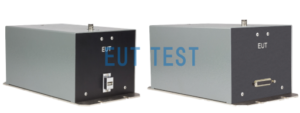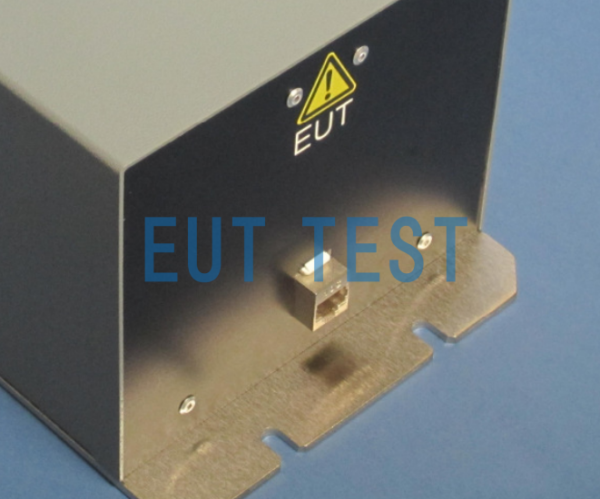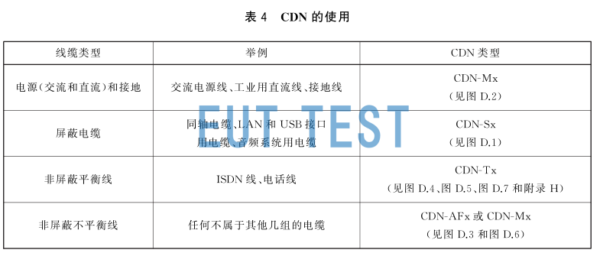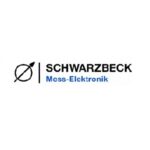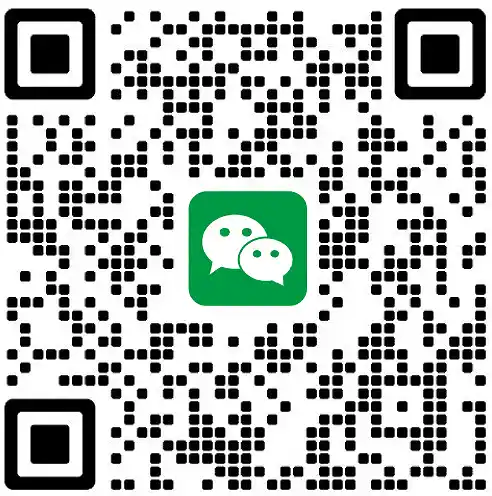Introduction:
The FCC Company of the United States has produced a total of FCC-801-M* (CDN-M sequence), FCC-801-AF* (CDN-AF sequence), FCC-801-C1-* (CDN-C sequence), FCC-801-S* (CDN-S sequence), FCC-801-T* (CDN-T sequence), five sequences of coupling and decoupling network test equipment, all of which meet the requirements of IEC 61000-4-6 and GBT17626 6 standards. All of them meet the requirements of IEC 61000-4-6 and GBT17626.6 standards.
The full name of the FCC company is Fischer Custom Communications, Inc. Our company is an authorized agent of the U.S. FCC company, and we can provide all the CDN coupling decoupling network product catalogs and quotes produced by the U.S. FCC company.
This page is only a summary of the product catalog, detailed technical parameters of each product and inquiry, please click on the product model to view and consult.
This page describes the origins of CDN coupled decoupling networks and the requirements of the test standard IEC61000-4-6. It also describes the classification of CDNs and electronic design schematics, and concludes with a demonstration of a CDN serial product manufactured by the FCC in the U.S.A. A CDN is a test instrument used to test CS conducted immunity.

FCC CDN Coupling Decoupling Network
CDN coupling decoupling network test standard:
There are a number of standards that can be tested using CDNs, including basic IEC standards, as well as industry-specific product standards.
- Base standards include: IEC61000-4-6 / GB/T17626.6 / IEC61000-4-16;
- In addition, many product and industry standards also mention the need to test conducted immunity, but they will refer to the above basic standard test methods to test, so as long as the purchase of coupling decoupling network in line with the requirements of the IEC61000-4-6 standard, the test laboratory can be in accordance with the standard requirements to test the conducted immunity of electronic products in many industries.
IEC61000-4-6 / GBT17626.6 requires conducted immunity testing of test equipment in the range of 150kHz to 80MHz, with a test frequency up to 230MHz.CDN can be used for conducted testing of the following electronic products, the test range includes power cables - unshielded balanced cables - audio cables - shielded cables - coaxial cables coupling and decoupling network of the electronics products. The CDN can be used for the following electronic products, the test scope includes electronic products power line - unshielded balanced line - audio line - shielded line - coaxial line coupling decoupling network;
Classification of CDN coupled decoupling networks and types of cables under test:
The following table shows the IEC61000-4-6 / GBT17626.6-2017 requirements for the categorized use of CDNs.
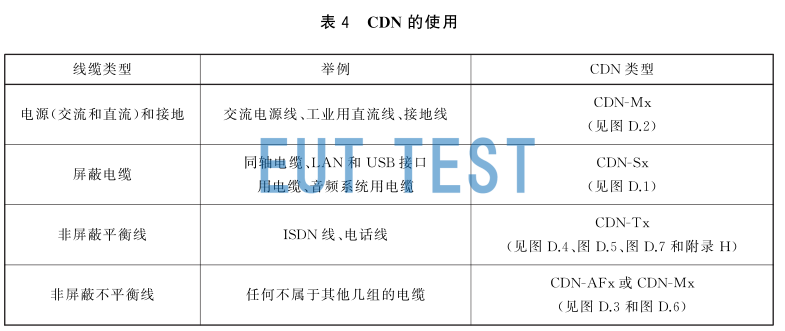
IEC61000-4-6 / GB/T17626.6-2017 Requirements for categorized use of CDNs
We represent Fischer Custom Communications, Inc. for all types of coupling and decoupling network CDNs, which are commonly used for conducted immunity testing. All CDN options are given at the end of this article.
Conforming to the standard IEC61000-4-6 IEC61000-4-16 GB/T17626, CDNs are generally categorized into the following categories according to the standard requirements.
- CDN M Sequence: Suitable for conducted immunity testing of products in DC, single-phase (2-wire/3-wire), and three-phase (4-wire/5-wire).
- CDN S Sequence: Suitable for conducted immunity testing of coaxial cables, cables for LAN, USB interfaces and cables for audio systems.
- CDN T Sequence: For conducted immunity testing of ISDN lines, telephone lines, CAT5 and other cables.
- CDN AF Sequence: suitable for use when none of the above sequences can be tested.
Principles of CDN coupled decoupling networks:
IEC 61000-4-16 defines conducted immunity tests at DC - 150 kHz. The standard mentions and specifies that EMC testers need to use a coupling decoupling network as shown below and described below:
- Power supply and input-output coupling network: use capacitor C = 1.0 μF, resistor R = 100 × nΩ, n is the number of wires
- Coupling network for communication ports (T-type): use capacitor C = 4.7 μF and resistor R = 200 Ω
- Typical utilization of coupled decoupling networks for CDNs is usually from 9 kHz - 150 kHz.
- Decoupling Devices: Provide common mode attenuation in the 0-150kHz range, transformers and converters can be used.
- --Input to output and input/output to ground insulation withstand: 1kV, 50/60Hz, 60s
- --Common mode decoupling attenuation in the frequency range of 15Hz-150kHz: ≥60dB
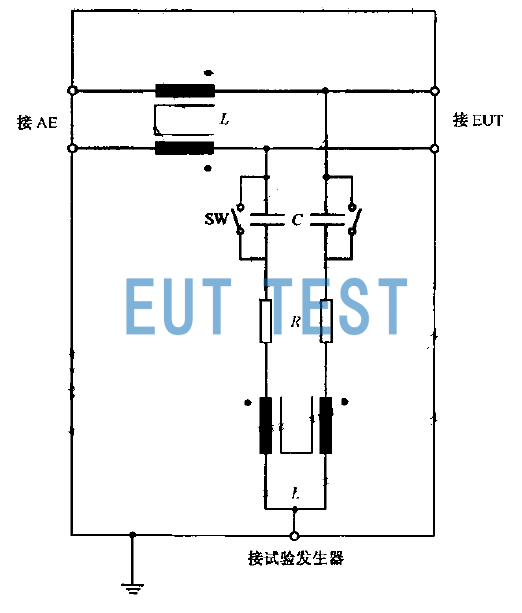
Circuit schematic for FCC CDN coupled decoupling network
FCC-produced CDN coupled decoupling networks Introduction:
The US FCC- Fischer Custom Communications can offer all CDN types in the EUT product line covering 9 kHz-80 MHz, thus allowing testing according to IEC 61000-4-16 and IEC 61000-4-6. The German NAMUR test specification requires a higher test level of up to 30 V open circuit voltage. This requires a higher power rating of 6-10 watts than standard coupled decoupling networks. The total power rating must not be less than 40 W:
- To include the basic insertion loss from the RFI port to the EUT port, 1 kHz 80% modulation and reflection are always present in all CDN circuits made by all manufacturers. Some manufacturers believe their CDNs are capable of 30 volt testing, but do not equip the CDN with the power ratings required for modulation.
- Each of our CDN designs can be customized for up to 75 watts of power, ensuring sufficient coupling capacity above the voltage levels of any other CDN on the market today.
- CDNs act as low-pass filters to prevent susceptible test signals from interfering with auxiliary equipment. A range of coupling decoupling networks are required to match a wide variety of electronic equipment instruments, systems, computers, printers and appliances. The U.S. FCC offers more than 35
- Different coupling decoupling networks and customized configurations are available. All decoupling networks maintain 150 Ω impedance between 150 kHz and 230 MHz.
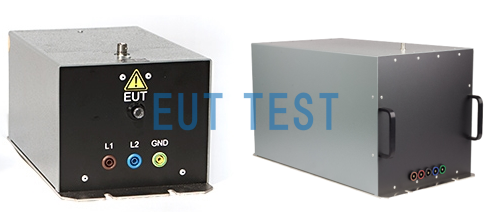
FCC CDN M-sequence coupling decoupling network
CDN M-Series Coupling Decoupling Web Catalog - US FCC
The role of the CDN M-Series:For power line coupling: single-phase/three-phase/Δ/Y
US M1 Power Cords CDN are used to couple common mode continuous wave and modulated signals to a single power line system.M1 is ideal for automotive systems using the chassis as a DC loop.M2 is typically used for 2-wire power conductor cables and M3 for 2-wire single phase cables.M4 is used for 3-phase with P.E. and M5 is used for power supplies for 3-phase systems with neutral ground and protective grounding.M4 is used for 3-phase with P.E. and M5 is used for power supplies for 3-phase with P.E. and M5 is used for power supplies for 3-phase systems with neutral ground and protective ground. The US FCC offers over 15 power cord configurations
<<<<提醒:左右滑动表格>>>>| Model number | frequency | *EUT power cable (of an appliance etc) quantities | greatest amps | greatest voltage | fulfillment criteria |
| FCC-801-M1-50A | 150kHz-230MHz | 1 | 50A | DC-60Hz 1000V | IEC 61000-4-6 Injected power: 12W |
| fcc-801-m2-16a-10kHz | 10kHz-230MHz | 2 | 16A | DC-60Hz 250V | IEC 61000-4-6 Injected power: 12W |
| FCC-801-M2-16A | 150kHz-230MHz | 2 | 16A | DC-60Hz 250V: L-L 480V: L-G | IEC 61000-4-6 Injected power: 12W |
| FCC-801-M2-25A | 150kHz-230MHz | 2 | 25A | DC-60Hz 250V: L-L 480V: L-G | IEC 61000-4-6 Injected power: 12W |
| FCC-801-M2-32A | 150kHz-230MHz | 2 | 25A | DC-60Hz 250V: L-L 480V: L-G | IEC 61000-4-6 Injected power: 12W |
| FCC-801-M2-50A | 150kHz-230MHz | 2 | 25A | DC-60Hz 250V: L-L 480V: L-G | IEC 61000-4-6 Injected power: 12W |
| FCC-801-M2-100A-1 | 150kHz-80MHz | 2 | 100A | DC-60Hz 250V: L-L 480V: L-G | IEC 61000-4-6 Injected power: 12W |
| FCC-801-M2-125A | 150kHz-80MHz | 2 | 125A | DC-60Hz 250V: L-L 480V: L-G | IEC 61000-4-6 Injected power: 12W |
| FCC-801-M2-200A-1 | 150kHz-80MHz | 2 | 200A | DC-60Hz 250V: L-L 480V: L-G | IEC 61000-4-6 Injected power: 12W |
| fcc-801-m2-m3-16a | 150kHz-230MHz | 3 | 16A | M2: DC-60Hz:250V M3: 50Hz-60Hz: 250V | IEC 61000-4-6 |
| FCC-801-M3-16A | 150kHz-230MHz | 3 | 16A | 50Hz-60Hz: 250V: L-L 480V: L-G | IEC 61000-4-6 Injected power: 9W |
| FCC-801-M3-25A | 150kHz-230MHz | 3 | 25A | 50Hz-60Hz: 250V: L-L 480V: L-G | IEC 61000-4-6 Injected power: 9W |
| FCC-801-M3-32A | 150kHz-230MHz | 3 | 32A | 50Hz-60Hz: 250V: L-L 480V: L-G | IEC 61000-4-6 Injected power: 9W |
| FCC-801-M3-50A | 150kHz-230MHz | 3 | 50A | 50Hz-60Hz: 250V: L-L 480V: L-G | IEC 61000-4-6 Injected power: 9W |
| FCC-801-M3-75A | 150kHz-80MHz | 3 | 75A | 50Hz-60Hz: 250V: L-L 480V: L-G | IEC 61000-4-6 Injected power: 9W |
| FCC-801-M3-100A-1 | 150kHz-80MHz | 3 | 100A | 50Hz-60Hz: 250V: L-L 480V: L-G | IEC 61000-4-6 Injected power: 9W |
| FCC-801-M3-200A-1 | 150kHz-80MHz | 3 | 200A | 50Hz-60Hz: 250V: L-L 500V: L-G | IEC 61000-4-6 Injected power: 9W |
| FCC-801-M4-16A | 150kHz-230MHz | 4 | 16A | 50Hz-60Hz: 250V: L-L 480V: L-G | IEC 61000-4-6 Injected power: 12W |
| FCC-801-M4-25A | 150kHz-230MHz | 4 | 25A | 50Hz-60Hz: 250V: L-L 480V: L-G | IEC 61000-4-6 Injected power: 12W |
| FCC-801-M4-32A | 150kHz-230MHz | 4 | 32A | 50Hz-60Hz: 250V: L-L 480V: L-G | IEC 61000-4-6 Injected power: 12W |
| FCC-801-M4-50A | 150kHz-230MHz | 4 | 50A | 50Hz-60Hz: 250V: L-L 480V: L-G | IEC 61000-4-6 Injected power: 12W |
| FCC-801-M4-100A-2 | 150kHz-80MHz | 4 | 100A | 50Hz-60Hz: 250V: L-L 480V: L-G | IEC 61000-4-6 Injected power: 12W |
| FCC-801-M4-200A-1 | 150kHz-80MHz | 4 | 200A | 50Hz-60Hz: 250V: L-L 480V: L-G | IEC 61000-4-6 Injected power: 12W |
| FCC-801-M5-16A | 150kHz-230MHz | 5 | 16A | 50Hz-60Hz: 277V: L-L 480V: L-G | IEC 61000-4-6 Injected power: 15W |
| FCC-801-M5-25A | 150kHz-230MHz | 5 | 25A | 50Hz-60Hz: 277V: L-L 480V: L-G | IEC 61000-4-6 Injected power: 15W |
| FCC-801-M5-32A | 150kHz-230MHz | 5 | 32A | 50Hz-60Hz: 277V: L-L 480V: L-G | IEC 61000-4-6 Injected power: 15W |
| FCC-801-M5-50A | 150kHz-230MHz | 5 | 50A | 50Hz-60Hz: 277V: L-L 480V: L-G | IEC 61000-4-6 Injected power: 15W |
| FCC-801-M5-75A | 150kHz-80MHz | 5 | 75A | 50Hz-60Hz: 277V: L-L 480V: L-G | IEC 61000-4-6 Injected power: 15W |
| FCC-801-M5-100A-1 | 150kHz-80MHz | 5 | 100A | 50Hz-60Hz: 277V: L-L 480V: L-G | IEC 61000-4-6 Injected power: 15W |
| FCC-801-M5-200A-1 | 150kHz-80MHz | 5 | 200A | 50Hz-60Hz: 277V: L-L 480V: L-G | IEC 61000-4-6 Injected power: 15W |
*: The number of power cables 1/2/3/4/5 means that L1/GND/L2/L3/N can be connected at the same time.
CDN-T8-T4 Unshielded Balanced Coupling Network - US FCC
T-Series: for unshielded balanced cables: 2-wire/4-wire/8-wire
The T series cdn is used to couple RF continuous wave signals and modulated signals to unshielded balanced lines. It allows proper operation of balanced circuits with impedances of 600 Ω @ 1 MHz and 100 Ω @ 250 MHz.
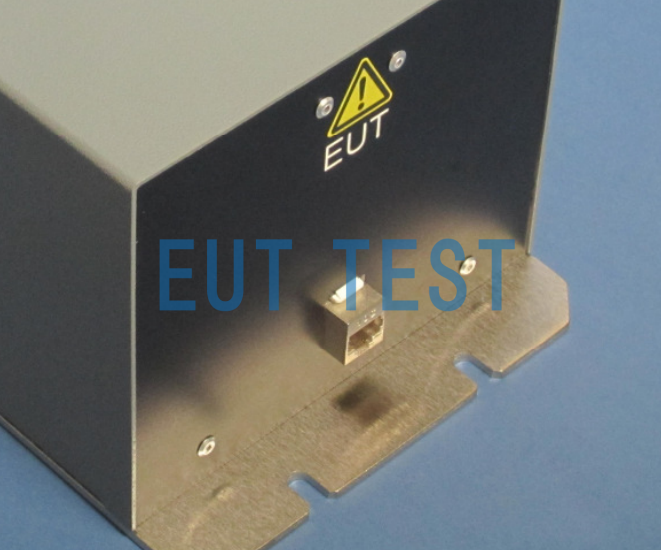
FCC CDN T Sequence-coupled decoupling network
| Model number | frequency | connector | greatest amps | greatest voltage | fulfillment criteria |
| 600050-fcc-801-t8-srj45 | 150kHz-230MHz | RJ45 | 1A | AC:100V DC:100V | IEC 61000-4-6 CSPR22 |
| 600155-fcc-801-t4-rj45 | 150kHz-230MHz | DB25-RJ45 | 0.4A | AC:100V DC:100V | IEC 61000-4-6 CSPR22 |
| 600156-fcc-801-t8-srj45 | 150kHz-230MHz | RJ45 | 0.4A | AC:100V DC:100V | IEC 61000-4-6 CSPR22 |
| 600167-fcc-801-t2-rj11 | 150kHz-230MHz | DB25-RJ11 | 0.4A | AC:100V DC:100V | IEC 61000-4-6 CSPR22 |
| F-090407-1004-1A | 150kHz-80MHz | RJ45 | Insertion loss <2dB@250MHz | IEC 61000-4-6 CSPR22 | |
| f-121221-1004-1_10gb-cdn-1 | 150kHz-80MHz | RJ45 ISO TR24750 PL | 1A | AC:100V DC:100V | IEC 61000-4-6 CSPR22 |
| F-140714-1004-1 | 150kHz-80MHz | RJ45 ISO TR24750 PL | 1A | AC:100V DC:100V | IEC 61000-4-6 CSPR22 |
CDN S-Series Shielded Line Coupling Decoupling Networks - FCC - For testing shielded cables
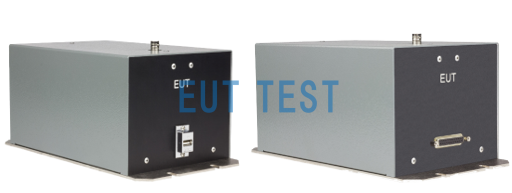
FCC CDN S-Series Shielded Line Coupling Decoupling Networks
| Model number | frequency | connector Available Cables | greatest amps | greatest voltage | fulfillment criteria |
| FCC-801-S-USB2_0 | 150kHz-230MHz | USB 4-wire TypeA TypeB | 3A | AC:250V DC:250V | IEC 61000-4-6 Maximum 9W |
| fcc-801-s-usb3_0 | 150kHz-230MHz | USB 9-wire TypeA TypeB | 3A | AC:250V DC:250V | IEC 61000-4-6 Maximum 9W |
| FCC-801-S2 | 150kHz-230MHz | DB9- serial port (computing) 2 lines | 3A | AC:250V DC:250V | IEC 61000-4-6 Maximum 9W |
| FCC-801-S4 | 150kHz-230MHz | DB9- serial port (computing) 4-wire | 3A | AC:250V DC:250V | IEC 61000-4-6 Maximum 9W |
| FCC-801-S8-RJ45 | 150kHz-230MHz | RJ45 8-wire | 3A | AC:250V DC:250V | IEC 61000-4-6 Maximum 9W |
| FCC-801-S8 | 150kHz-230MHz | DB9- serial port (computing) 8-wire | 3A | AC:250V DC:250V | IEC 61000-4-6 Maximum 9W |
| FCC-801-S9 | 150kHz-230MHz | DB9- serial port (computing) 9-line | 3A | AC:250V DC:250V | IEC 61000-4-6 Maximum 9W |
| FCC-801-S15 | 150kHz-230MHz | DB15- serial port (computing) 15 lines. | 3A | AC:250V DC:250V | IEC 61000-4-6 Maximum 9W |
| FCC-801-S19-HDMI | 150kHz-230MHz | HDMI 19th parallel. | 3A | AC:250V DC:250V | IEC 61000-4-6 Maximum 9W |
| FCC-801-S25 | 150kHz-230MHz | DB25- emulator 25 lines | 3A | AC:250V DC:250V | IEC 61000-4-6 Maximum 9W |
| FCC-801-S37 | 150kHz-230MHz | DB37- RS422 37 lines. | 3A | AC:250V DC:250V | IEC 61000-4-6 Maximum 9W |
CDN C Series Coaxial Line Coupling Decoupling Networks - US FCC: for coaxial cables (with shield)
The C-Series CDNs are used to couple RF interference signals to the shielding of RF coaxial cables. 50 ohms are suitable for RF testing and 75 ohm systems are suitable for video transmission system equipment.
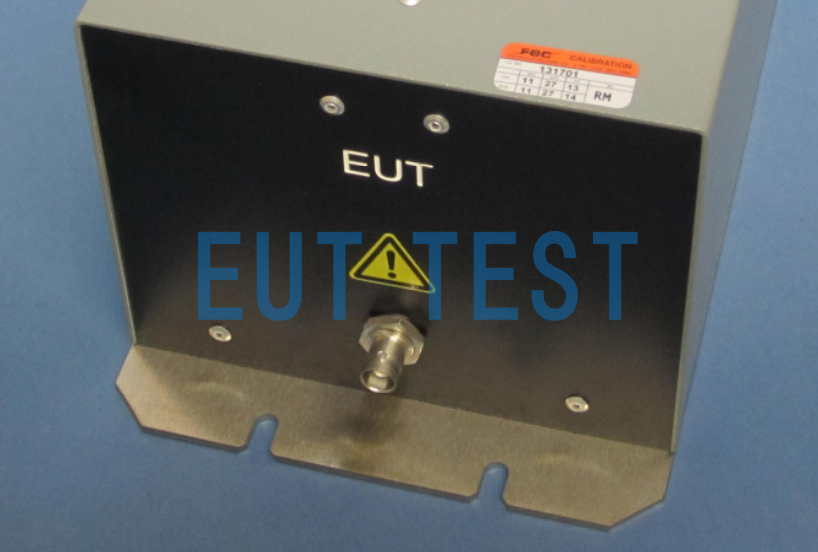
FCC CDN C Series Coaxial Line Coupling Decoupling Networks
| Model number | frequency | connector Available Cables | greatest amps | greatest voltage | fulfillment criteria |
| fcc-801-c1-bnc-50 | 150kHz-230MHz | BNC 50Ω Line 1 | 1A | AC:350V DC:600V | IEC 61000-4-6 Maximum 9W |
| fcc-801-c1-bnc-75 | 150kHz-230MHz | BNC 75Ω Line 1 | 1A | AC:350V DC:600V | IEC 61000-4-6 Maximum 9W |
CDN AF Series Unshielded Line Coupling and Decoupling Networks - US FCC: For Unshielded Audio Cables
The AF series is ideal for unshielded audio cables and is available from 2 to 50 pins. This CDN allows the transmission of intentional signals with a bandwidth greater than 2 kHz.CISPR 15 uses a variant of this CDN type to extend up to 300 MHz.It is important to check the impedance and the operating frequency of the audio system to prevent effects on the CDN.

FCC CDN AF Series Unshielded Line Coupling Decoupling Networks
| Model number | frequency | connector Available Cables | greatest amps | greatest voltage | fulfillment criteria |
| FCC-801-AF2 | 150kHz-230MHz | banana head 2 lines | 2A | AC:250V DC:250V | IEC 61000-4-6 Maximum 12W |
| FCC-801-AF3 | 150kHz-230MHz | banana head 3-wire | 2A | AC:250V DC:250V | IEC 61000-4-6 Maximum 12W |
| FCC-801-AF4 | 150kHz-230MHz | banana head 4-wire | 2A | AC:250V DC:250V | IEC 61000-4-6 Maximum 12W |
| FCC-801-AF8 | 150kHz-230MHz | DB9 4-wire | 2A | AC:250V DC:250V | IEC 61000-4-6 Maximum 8W |
| FCC-801-AF9 | 150kHz-230MHz | DB9 9-line | 2A | AC:250V DC:250V | IEC 61000-4-6 Maximum 8W |
| FCC-801-AF15 | 150kHz-230MHz | DB15 15 lines. | 2A | AC:250V DC:250V | IEC 61000-4-6 Maximum 9W |
| FCC-801-AF25 | 150kHz-230MHz | DB25 25 lines | 2A | AC:250V DC:250V | IEC 61000-4-6 Maximum 9W |
We also represent and sell CDN coupling decoupling networks from schwarzbeck, contact us for more information.



